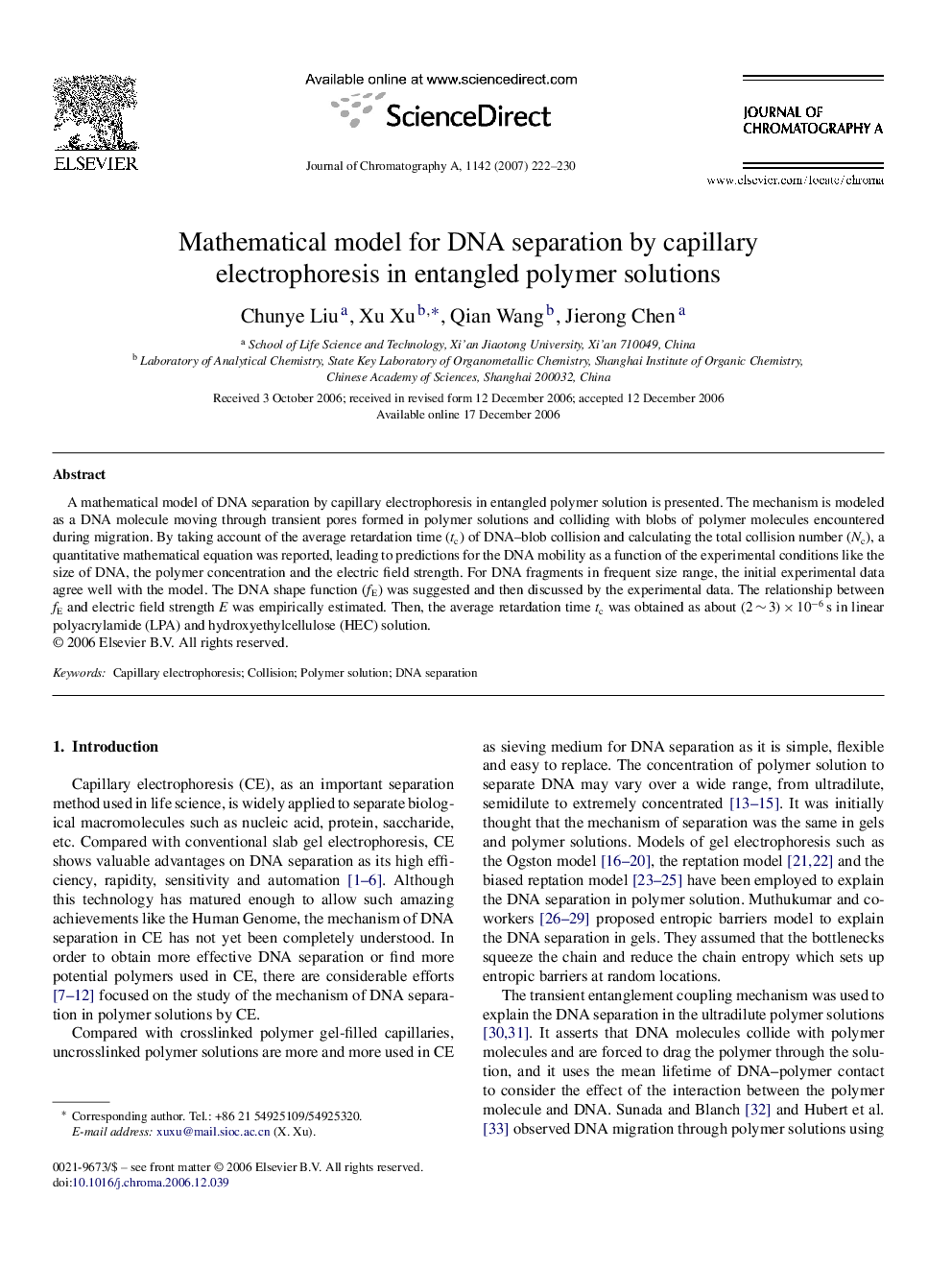| Article ID | Journal | Published Year | Pages | File Type |
|---|---|---|---|---|
| 1208129 | Journal of Chromatography A | 2007 | 9 Pages |
A mathematical model of DNA separation by capillary electrophoresis in entangled polymer solution is presented. The mechanism is modeled as a DNA molecule moving through transient pores formed in polymer solutions and colliding with blobs of polymer molecules encountered during migration. By taking account of the average retardation time (tc) of DNA–blob collision and calculating the total collision number (Nc), a quantitative mathematical equation was reported, leading to predictions for the DNA mobility as a function of the experimental conditions like the size of DNA, the polymer concentration and the electric field strength. For DNA fragments in frequent size range, the initial experimental data agree well with the model. The DNA shape function (fE) was suggested and then discussed by the experimental data. The relationship between fE and electric field strength E was empirically estimated. Then, the average retardation time tc was obtained as about (2 ∼ 3) × 10−6 s in linear polyacrylamide (LPA) and hydroxyethylcellulose (HEC) solution.
